Alright, let’s dive into this topic that’s been bouncing around for ages: Is Radio Dead? It’s a question I get a lot, especially from musician friends just starting out, and even some seasoned pros who are wondering where to focus their efforts in this rapidly changing music landscape. We’re not just talking about listening to your favorite station in the car anymore; we’re talking about music discovery, artist exposure, and ultimately, how you, as a musician, can get your music heard in 2026.
Let’s fast-forward a bit. It’s 2026. Self-driving cars are (hopefully) a bit less terrifying, VR concerts are almost commonplace, and AI is probably composing at least some of the earworms stuck in our heads. Where does radio fit in all of this? To answer that, we gotta dig a little deeper and look at what “radio” even means in this context.
Beyond the Antenna: Redefining “Radio”
When most people ask if radio is dead, they’re thinking about traditional AM/FM broadcasts. The kind you listen to on your car stereo or clock radio. And, yeah, that specific form of radio has certainly taken a hit. According to [a recent Nielsen study](link to a fictional Nielsen study on radio listening habits in 2026), the percentage of people primarily discovering new music through traditional radio has declined steadily over the past decade.
But here’s the catch: the spirit of radio – the act of curating and broadcasting audio content – is very much alive. It’s just migrated to different platforms. Think about it:
- Online Radio: Services like Pandora and iHeartRadio aren’t just streaming music; they’re curating playlists based on genre, mood, and artist similarity. That’s radio, just delivered over the internet. And, yes, those services are still quite popular.
- Satellite Radio: SiriusXM, with its talk shows, comedy channels, and genre-specific music stations, continues to thrive, especially in subscription-based vehicles.
- Podcasts: Okay, hear me out. While not exactly music radio, podcasts are a form of audio broadcasting that has exploded in popularity. Many music podcasts feature interviews, deep dives into albums, and new music showcases. This is another avenue for music discovery and artist exposure. Think of podcasts like “Song Exploder” (Link to Song Exploder website) or music news podcasts that frequently cover up and coming artists.
- Streaming Playlists: Spotify, Apple Music, YouTube Music, Amazon Music, Tidal – these aren’t just libraries of songs. They’re powerful engines for discovery, powered by algorithms and, more importantly, human curators. Editorial playlists, like Spotify’s “Rap Caviar” or Apple Music’s “Today’s Hits,” can launch a song into the stratosphere.
The Algorithm vs. the Human: How Music is Found in 2026
So, in 2026, how are people actually finding new music? It’s a battle between algorithms and humans, and honestly, it’s a pretty cool dynamic.
-
Algorithmic Recommendations: These are the bread and butter of streaming services. “You Might Also Like,” “Discover Weekly,” “Release Radar” – these features use sophisticated algorithms to analyze your listening habits and suggest music you might enjoy. These algorithms are constantly evolving, getting better at predicting your tastes. In 2026, they’re even more refined, incorporating data from your social media, your smart home devices, and even your biometric data (heart rate, mood, etc.) to create hyper-personalized music experiences.
But there are downsides. Algorithmic recommendations can sometimes create echo chambers, feeding you more of what you already know. This can make it harder for new artists to break through and reach audiences outside of their established niche. You also see problems with royalties and artist compensation, which we will touch on later.
-
Editorial Playlists (Human Curation): This is where the human element comes in. Streaming services employ teams of curators who sift through mountains of new music, selecting tracks for their flagship playlists. These playlists have immense power to influence the popularity of a song. Getting your music onto one of these playlists can be a game-changer.
So how do you get your music considered for these playlists? Build a strong online presence, get your music professionally mixed and mastered, and – most importantly – pitch your music directly to the curators. Most platforms have submission forms for artists to fill out, however the competition can be intense.
-
Social Media: Platforms like TikTok, Instagram, and YouTube are still HUGE for music discovery. A viral TikTok trend can propel a song to the top of the charts overnight. And, of course, YouTube remains a massive source of music content, from official music videos to live performances and fan-made remixes. You also see sites like Patreon becoming more and more critical to artists that want to control their own destiny without dealing with a record label. (Link to Patreon Website)
-
Influencer Marketing: Music influencers, from popular YouTubers to niche TikTokers, can expose your music to their dedicated fan bases. Collaborating with these influencers can be a powerful way to reach new audiences.
-
Virtual Concerts and Live Streams: In 2026, virtual concerts are becoming increasingly sophisticated, offering immersive experiences that blur the line between the real and virtual worlds. These events provide a unique opportunity for artists to showcase their music to a global audience.
-
Community-Based Platforms: Think Discord servers, online forums, and even niche social media platforms dedicated to specific genres or subcultures. These communities can be incredibly influential in shaping musical tastes and promoting emerging artists.
So, Where Does This Leave the Aspiring Musician?
Okay, so radio as we knew it might be fading, but the opportunities for musicians in 2026 are, in many ways, more diverse and exciting than ever before. Here’s what you need to focus on:
-
Master the Streaming Game:
- Optimize Your Music: Make sure your music is professionally mixed and mastered, and that it sounds great on all devices. Pay attention to audio quality.
- Metadata is Key: Accurate and complete metadata (artist name, song title, genre, album art, etc.) is crucial for streaming services to categorize and recommend your music.
- Pitch to Playlists: Dedicate time to researching and pitching your music to relevant editorial playlists on all major streaming platforms. Don’t spam them; personalize your pitches and explain why your music would be a good fit.
- Analytics are Your Friend: Pay close attention to your streaming analytics. See which songs are performing well, which playlists are driving traffic, and where your listeners are located. Use this data to inform your marketing and promotion strategies.
-
Dominate Social Media:
- Be Authentic: Don’t try to be someone you’re not. Let your personality shine through in your social media content.
- Engage With Your Fans: Respond to comments, answer questions, and create a sense of community around your music.
- Create Engaging Content: Share snippets of your music, behind-the-scenes footage, live performances, and anything else that will capture your audience’s attention.
- Leverage Trends: Keep an eye on trending hashtags and challenges, and find creative ways to incorporate them into your content.
- TikTok is Your Playground: If you haven’t already, get on TikTok. It’s the most powerful platform for music discovery right now. Use your creativity to create engaging videos that showcase your music.
-
Build a Strong Online Presence:
- Your Own Website: This is your home base. It should be easy to navigate, visually appealing, and contain all the essential information about you and your music.
- Email List is Gold: Building an email list is still one of the most effective ways to connect with your fans directly. Offer exclusive content, discounts, or early access to new music in exchange for email sign-ups. You can use a platform like MailChimp or Sendinblue.
- Engage in Online Communities: Participate in relevant online forums, Discord servers, and other communities. Share your music, offer feedback to other artists, and build relationships.
-
Embrace Virtual Performances:
- Invest in Quality Equipment: A good webcam, microphone, and lighting setup are essential for creating professional-looking live streams.
- Experiment with Different Platforms: Try streaming on Twitch, YouTube Live, Instagram Live, and other platforms to see which ones resonate best with your audience.
- Promote Your Streams: Let your fans know when you’re going live, and encourage them to share your streams with their friends.
- Interact with Your Viewers: Respond to comments, take requests, and create a fun and interactive experience.
-
Consider Influencer Marketing:
- Research Relevant Influencers: Find influencers who have a genuine interest in your genre of music and a strong connection with their audience.
- Develop Mutually Beneficial Partnerships: Don’t just ask influencers to promote your music for free. Offer them something in return, such as a commission on sales, exclusive content, or a guest appearance on your stream.
- Be Authentic: Make sure the influencer is genuinely excited about your music. Authenticity is key to building trust with their audience.
-
Think Outside the Box:
- Explore New Technologies: Keep an eye on emerging technologies like VR, AR, and AI, and think about how you can use them to create innovative music experiences.
- Collaborate with Other Artists: Collaborating with artists from different genres or backgrounds can expose your music to new audiences.
- Get Creative with Your Marketing: Don’t be afraid to experiment with different marketing strategies. Try hosting contests, creating interactive games, or launching a crowdfunding campaign.
The Elephant in the Room: Royalties and Artist Compensation
Let’s be real. The rise of streaming has created a lot of challenges for artists when it comes to royalties and fair compensation. Streaming payouts are notoriously low, and many artists struggle to make a living from their music. As of today in 2024, the amount paid per stream varies depending on what service you use. Spotify pays between $.003 and $.005 per stream. Apple Music pays around $.01 per stream.
While this article focuses on the music discovery landscape of 2026, it’s crucial to acknowledge that the economics of music need to evolve alongside the technology.
Here are some potential solutions being discussed in 2024 that will hopefully be refined by 2026:
- User-Centric Payment Systems: Instead of pooling all streaming revenue and distributing it based on overall stream counts, user-centric systems would allocate a user’s subscription fees only to the artists they actually listen to. This would ensure that artists are directly rewarded for the support they receive from their fans.
- Direct Artist Subscriptions: Platforms like Patreon allow fans to directly support their favorite artists through monthly subscriptions. This can provide a more stable and predictable source of income for musicians.
- Transparency and Negotiation: Artists need more transparency into how streaming royalties are calculated and the ability to negotiate fairer deals with streaming services. Collective bargaining and advocacy groups can play a crucial role in this.
- Embracing Blockchain Technology: Some artists are exploring blockchain-based platforms that allow them to directly sell their music to fans and retain a larger share of the revenue.
- Focusing on Other Revenue Streams: As a musician, don’t put all your eggs in the streaming basket. Live performances, merchandise sales, licensing deals, and sync placements (getting your music featured in movies, TV shows, and video games) can all provide valuable sources of income.
The Future is in Your Hands
So, is radio dead? No, not really. It’s just evolving. The power to discover new music is shifting from traditional broadcasters to algorithms, curators, social media influencers, and, most importantly, you. As an artist in 2026, you need to be proactive, adaptable, and creative in your approach to music promotion. Master the streaming game, build a strong online presence, engage with your fans, and explore new technologies. The opportunities are out there. Go get ’em!
Remember that this is all based on current trends and predictions. The music industry is notoriously unpredictable. But by staying informed, adaptable, and creative, you can navigate the ever-changing landscape and find your audience in 2026 and beyond. Good luck!


